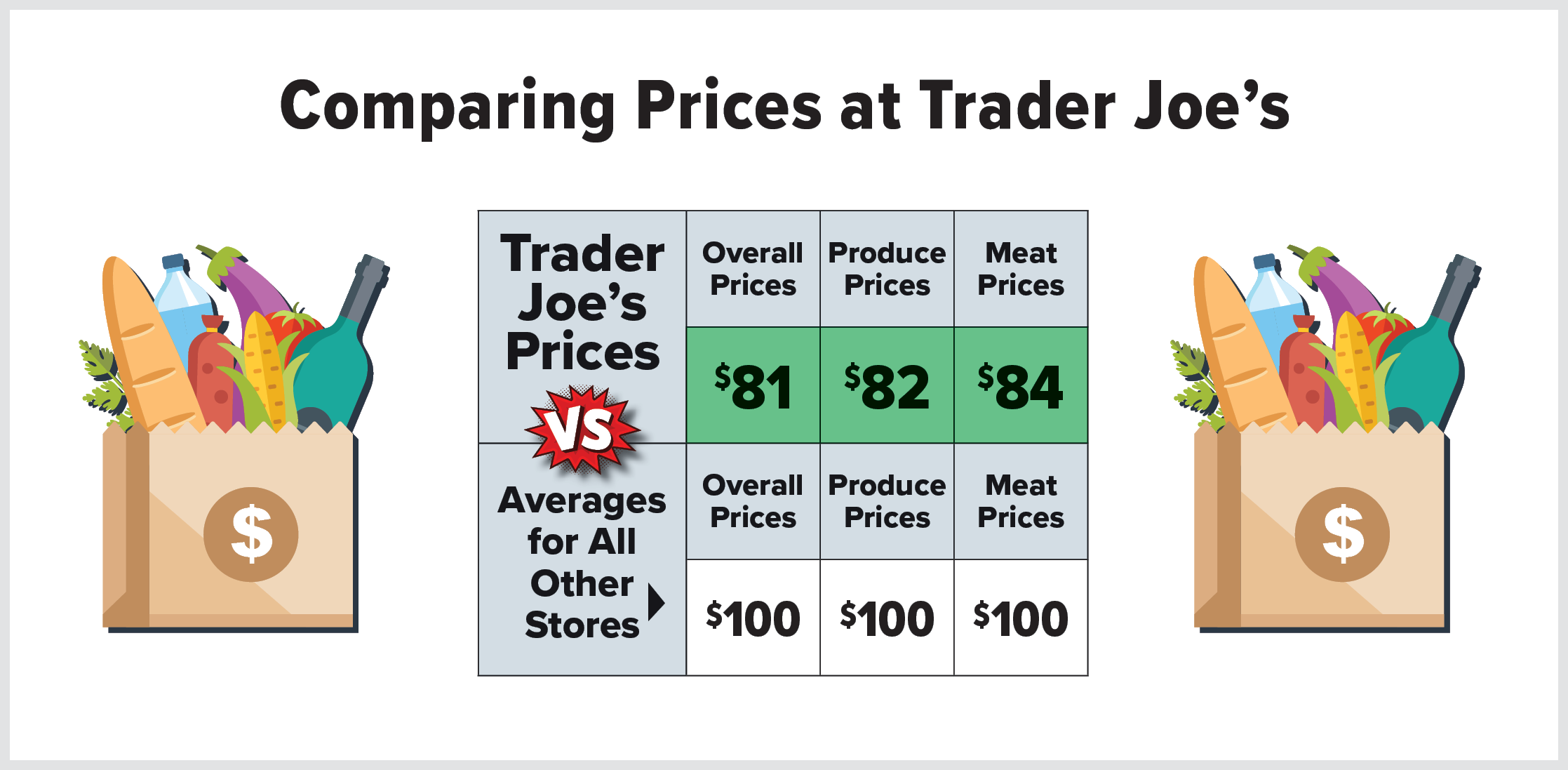How do Trader Joe’s Prices Compare?
Last updated November 2022
Trader Joe’s continues to earn relatively high accolades from its customers for our survey question on “overall quality”—76 percent rated it “superior.” That’s a far more favorable score than what customers gave several other area chains, including Whole Foods. But since the market basket we used for our price survey largely consists of national-brand products, and since Trader Joe’s offers mainly its own brands, we couldn’t compare its prices using our standard price survey. Instead, we had to shop Trader Joe’s using a special survey that included the same fresh produce, meats, and dairy items in our standard survey, comparing the national-brand items on our list with the prices of Trader Joe’s store brands. (When comparing prices, we used per-unit pricing—for example, price per ounce.)
The figure below shows the results of these comparisons:
- Overall, Trader Joe’s prices were 19 percent lower than the average prices we found at surveyed area stores, placing it among the lowest-cost chains in the area. Its prices were about 24 percent lower than QFC and Whole Foods, 18 percent lower than Albertsons, 16 percent lower than Safeway, 12 percent lower than Target, and six percent lower than Fred Meyer.
- For quality, Trader Joe’s received favorable ratings from its surveyed customers overall and earned higher scores than any of the area’s largest chains.
- For produce, Trader Joe’s prices were 18 percent lower than the average prices at all surveyed stores. For meat, Trader Joe’s prices were about 16 percent lower than average.
- Unfortunately, many Trader Joe’s shoppers will also have to shop at conventional supermarkets: It carried fewer than half of the items in our market basket.


